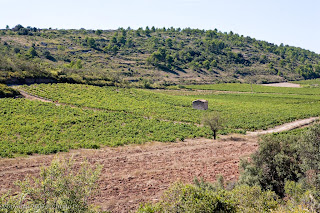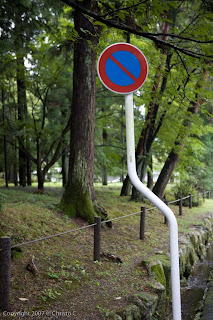Monday, September 10, 2007
Monday, September 03, 2007
Kyoto Part 2
In the 1220’s it was the comfortable villa of Kintsune Saionji Yoshimitsu, the 3rd Shogun of Ashikaga, abdicated the throne in 1394. After three years, he began to build Kitayamaden and he made a special effort to make it a breath-taking site. He indulged in his peaceful life in this serene setting. After Yoshimitsu’s death, Kitayamaden was made into a Zen temple in accordance with his will. All the buildings of those days came to ruin except Kinkaku. The garden, however, remains as it was in former days and can be enjoyed as it was hundreds of years ago. Rokuon-ji Temple was inscribed as World Cultural Heritage in 1994.

Ryoan-ji Temple (竜安寺)
Ryoan-ji Temple in Kyoto is famous for its Zen garden, which is considered to be one of the most notable examples of the "dry-landscape" style.
Some say Ryoan-ji Temple garden is the quintessence of Zen art, and perhaps the single greatest masterpiece of Japanese culture. Surrounded by low walls, an austere arrangement of fifteen rocks sits on a bed of white gravel. That's it: no trees, no hills, no ponds, and no trickling water. Nothing you could describe as romantic, distracting or pretty.
Tenryu-ji Temple 天竜寺
Nestled on a slope of the Arashiyama district of Kyoto, Tenryu-ji ("heavenly dragon temple") is listed on the UNESCO World Heritage List and is the head temple of the Tenryu-ji branch of Rinzai Zen Buddhism.
Like other Rinzai Zen temples in Kyoto (Nanzenji, Tofukuji, Ryoanji...) it is noted for its Zen gardens and extensive white buildings.
The temple was founded in 1339 by Shogun Ashikaga Takauji in memory of emperor Go-Daigo (1288-1339), with whom he sided during the civil war which brought to an end the Kamakura Shogunate (1185-1333).
Tenryu-ji was actually a former villa of emperor Go-Daigo himself. The site had earlier been occupied by the Danrin-ji temple since the 9th century, the first Zen temple in Japan. Emperor Kameyama (1249-1305) built a villa on the property, where his grandson Go-Daigo was raised and educated.
Following Go-Daigo's passing, a Buddhist priest dreamt of a dragon rising from the nearby river and interpreted it as the uneasy spirit of the defunct emperor. As a result, Ashikaga Takauji ordered to built a temple to appease Go-Daigo's spirit.
Tenryu-ji was ravaged by fires no less than eight times, last in 1864. Although the present building only date from 1900, the 14th century landscape garden is one of the oldest in Japan.

* comments gathered on jref.com
Kyoto Part 1

Ginkakuji Temple (銀閣寺 also known as the Silver Pavillon
At the northern end of the Philosopher's Walk, approached along a street lined with shops selling tacky souvenirs. Much like its golden counterpart, the Silver Pavilion is often choked with tourists, shuffling past a scrupulously-maintained dry landscape Zen garden and the surrounding moss garden, before viewing the Pavilion across a pond. To me, its still one of the most amazing temple in Kyoto, not as flashy as the Golden Temple but with a true feeling of quietness.

The Philosopher's Walk is the name given to a 2km-long path through north-eastern Kyoto, along which a philosophy professor, Kitaro Nishida, used to frequently walk. It is a surprisingly pleasant and relaxing walk even today, though you will undoubtedly share it with more tourists than Kitaro did. The walk runs south from Ginkakuji Temple beside a river to Nyakuoji Shrine, many guidebooks suggest that the walk continues further south from there to Nanzenji Temple, but this southerly section of the walk is less insistently signposted. The route passes several temples en route, notably Honen-in, a beautiful secluded temple with a thatched gate.
Nanzenji Temple, with its distinctive two-storey entrance gate (sanmon) and aqueduct, is another popular temple in Kyoto, but its larger size means that it doesn't seem as crowded as many of the others.
Kiyomizu Temple (清水寺 Kiyomizudera). This temple complex, with a spectacular location overlooking the city is a deservedly popular attraction in the city, approached by either of two tourist-filled souvenir-shop-lined streets, Kiyomizu-zaka or Chawan-zaka. The main hall's wooden veranda, supported by hundreds of pillars and offering incredible views over the city, Jishu-jinja , the love-themed shrine selling countless charms to help you snag the one you love, and featuring two "love stones" positioned around 18m apart which the lovelorn must walk between with eyes closed to confirm their loved one's affection, and Otowa-no-taki the temple's waterfall, which gives it its name (Kiyomizu literally means 'pure water'). Visitors stand beneath the waterfall, and collect water to drink by holding out little tin cups.

































































